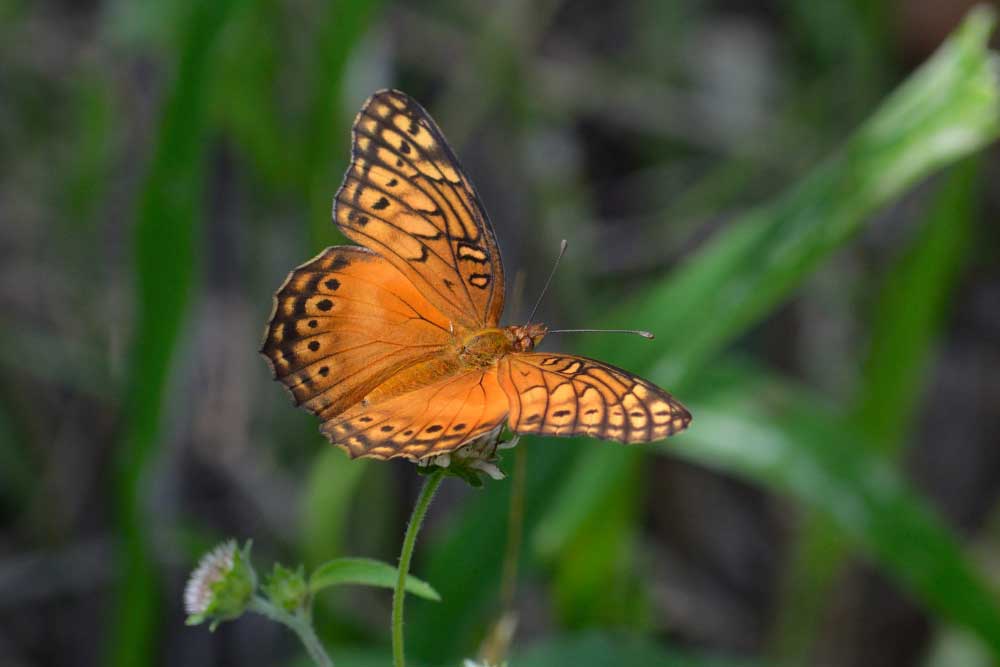
Growing Zones
8a-11b
Light
Full Sun to Part Shade
Duration
Perennial
Size
Vining up to ~15 ft
The Corkystem passionflower (Passiflora suberosa) may not have the most showy blossoms in its family, but it is a top candidate for attracting butterflies! This creeping vine grows in moist forests, pinelands, and coastal uplands. It is an important larval host for several butterflies, as well as native bees, which are its principal pollinators, and its fruits are a staple for birds. Although theoretically edible when ripe, the fruits are said to have a bland flavor.
The tiny greenish-yellow flowers, about the size of a dime, lack petals but are ornamented with five sepals. The corona has short yellow filaments that are often stained with dark purplish hues at the base, while the operculum varies in color from light yellow-green to deep purplish. A spherical light green ovary in the center of the bloom supports whitish to light yellow-green styles with light yellow stigmas. The plant’s little fruits begin as green orbs and grow into deep purple or nearly blue-black colors. Its alternately placed leaves vary greatly, ranging from whole to three-lobed, with significant depth differences between the lobes. The name “Corkystem” refers to the stems, which change color from green to tan, become woody, and sprout wings as they grow.
Names:
Scientific Name: Passiflora suberosa L.
Plant Family: Passifloraceae (Passion-Flower Family)
Other Names:
- Corky passion vine
- Cork-bark passion flower
- Corkstem passionflower
- Corky passionfruit
Native range:
Corkystem passionflower is a native vine in Florida and South Texas.
Considerations:
Passionflower plants spread through rhizomes located beneath the ground surface. In places with loose sand or mulch, it can spread like a wildflower, popping up some distance away from the parent plant. Its propensity to climb via tendrils might provide a challenge for other slow-growing plants.
Host plant for:

Crimson-patched Longwing

Gulf Fritillary

Julia Heliconian

Mexican silverspot




